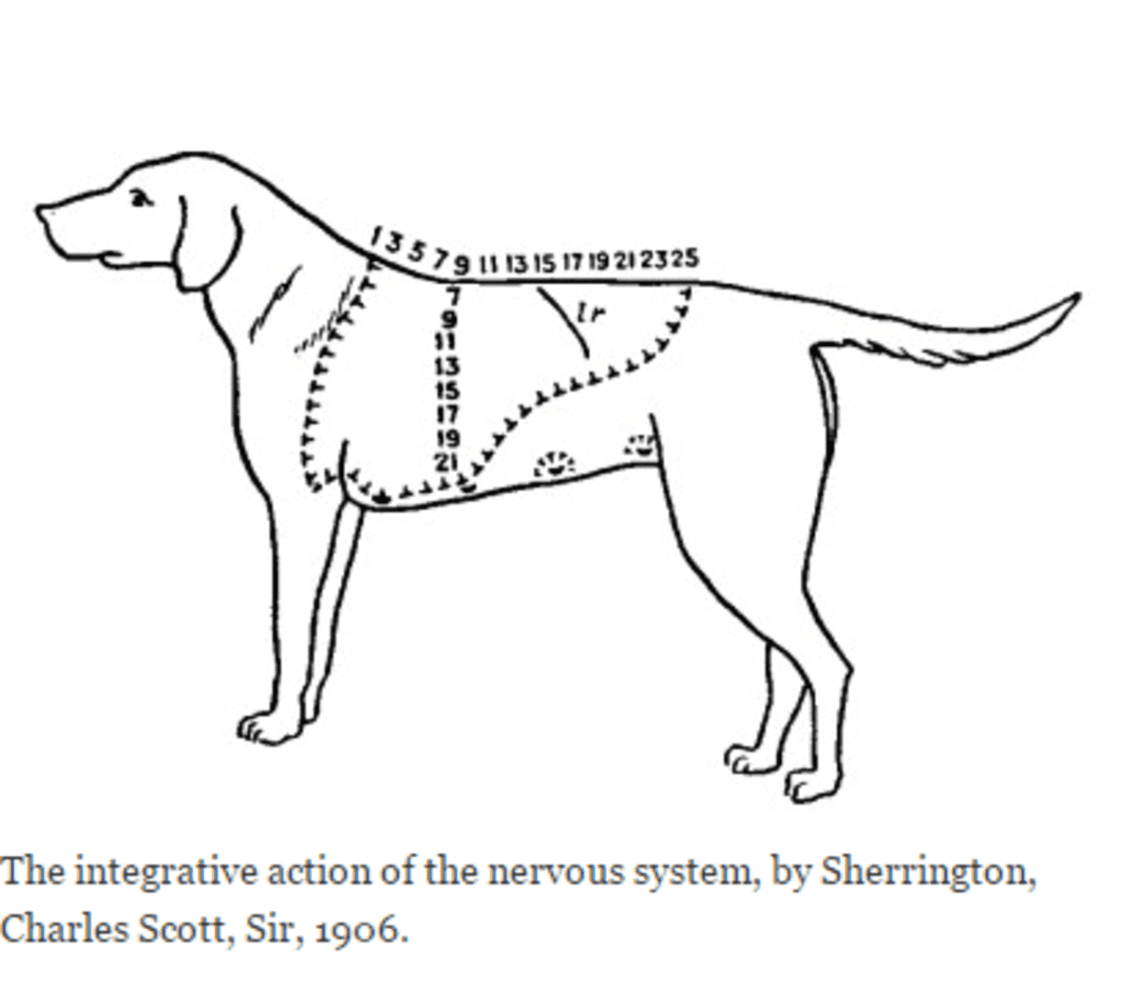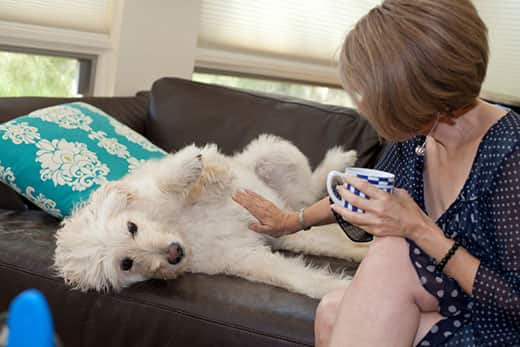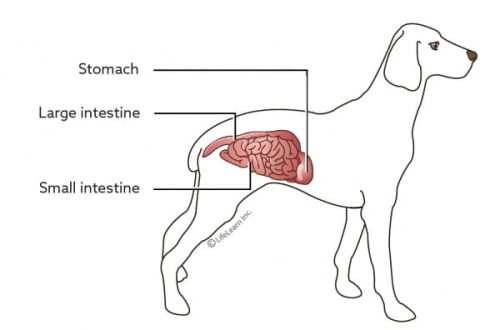
Scratching reflex: why does a dog twitch its paw when scratched
The dog has a magical place, the scratching of which makes him twitch his paw. But what causes this reflex – does she tickle or does it itch?? Why do dogs twitch their paw when you scratch your stomach – they are unpleasant?
After conducting a series of studies, scientists have found a scientific reason why dogs react so extraordinary to the good old scratching.
Contents
What is the scratch reflex in dogs
 According to Popular Science, the scratch reflex is an involuntary response that protects dogs from fleas, ticks, and other sources of irritation. The proverbial magical place is nothing more than a cluster of nerves under the skin. The situation “when I scratch the dog, she pulls her paw” happens because the owner touches this place. The nerves are activated and send a signal to the back leg through the spinal cord to start kicking to eliminate the source of irritation.
According to Popular Science, the scratch reflex is an involuntary response that protects dogs from fleas, ticks, and other sources of irritation. The proverbial magical place is nothing more than a cluster of nerves under the skin. The situation “when I scratch the dog, she pulls her paw” happens because the owner touches this place. The nerves are activated and send a signal to the back leg through the spinal cord to start kicking to eliminate the source of irritation.
This does not mean that the dog does not like it. A pet’s attitude towards such scratching can be understood by paying attention to its body language, according to Animal Planet.
Animals that don’t like it or are tired of these sensual sensations usually try to move away. And the dog, which often lies on its back to expose its belly, reports that it is comfortable and ready for the owner to scratch its belly.
Why does the reflex usually work when scratching the abdomen
The dog twitches its paw when you scratch its stomach. With rare exceptions, the scratch reflex in dogs most often works this way. This is because the clusters of nerve endings that trigger this reflex are located only in the saddle region of the abdomen and are called the “receptive field of the reflex,” writes DogDiscoveries.com.
One theory for why this nerve reflex is localized to this area is that it is not as mobile or protected as other parts of the body. This makes it more vulnerable to parasites and other irritants.
How does the scratch reflex work?
 At the turn of the XNUMXth century, the English neuroscientist Sir Charles Sherrington became intrigued by this behavior in dogs and devoted considerable resources to studying it.
At the turn of the XNUMXth century, the English neuroscientist Sir Charles Sherrington became intrigued by this behavior in dogs and devoted considerable resources to studying it.
According to findings published in his book Integrative Activity of the Nervous System, the scratch reflex in dogs has four stages:
delay period. A short pause between the moment when the owner starts scratching the dog’s magical place and the moment when his paw starts to twitch. This delay is due to the fact that it takes time for the nerves to send a signal through the spinal cord to the brain and return the signal back to the leg and activate the movement.
Warm up. This is the time it takes for the leg to gain speed. The movement of the foot usually begins slowly and then intensifies as the owner continues to scratch or rub the magic spot.
Subsequent discharge. This refers to cases where the movement of the foot continues after the owner has finished scratching or removed his hand. Just as it takes time for the signal to get to the leg and tell it to start kicking, the signal to stop doesn’t get there right away either.
Fatigue. Too long scratching in the same place can lead to a reflex fading. For this reason, sometimes paw twitching slows down and stops even if the owner continues to scratch the pet. The reflex needs time to recover and re-activate.
The dog’s scratch reflex may sound funny, but it’s essential for a pet’s defense against parasites and provides key information about its neurological health. Whether the dog is aware of this or just enjoys being scratched at the magical place, one thing is almost certain: tummy scratching is a great joy for him.





